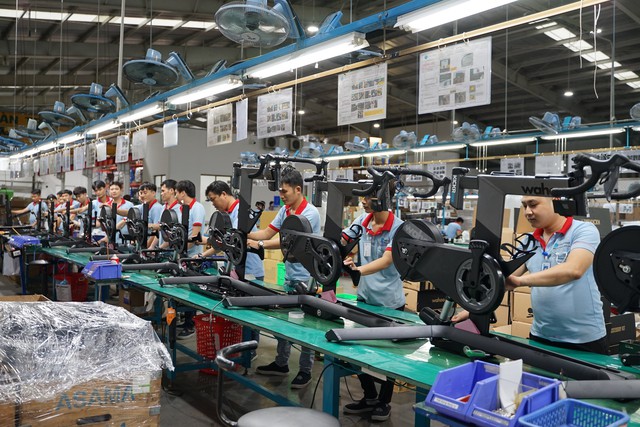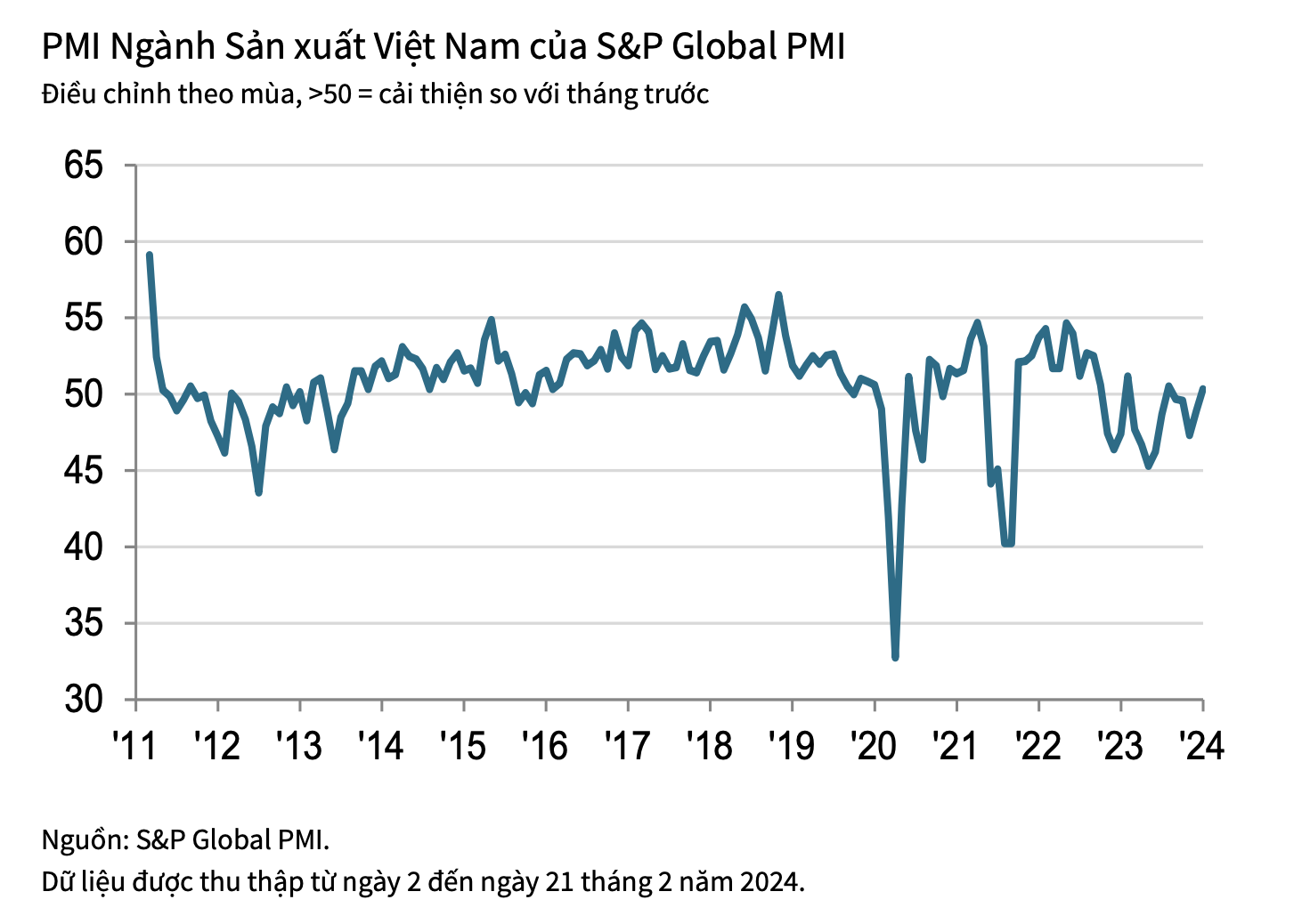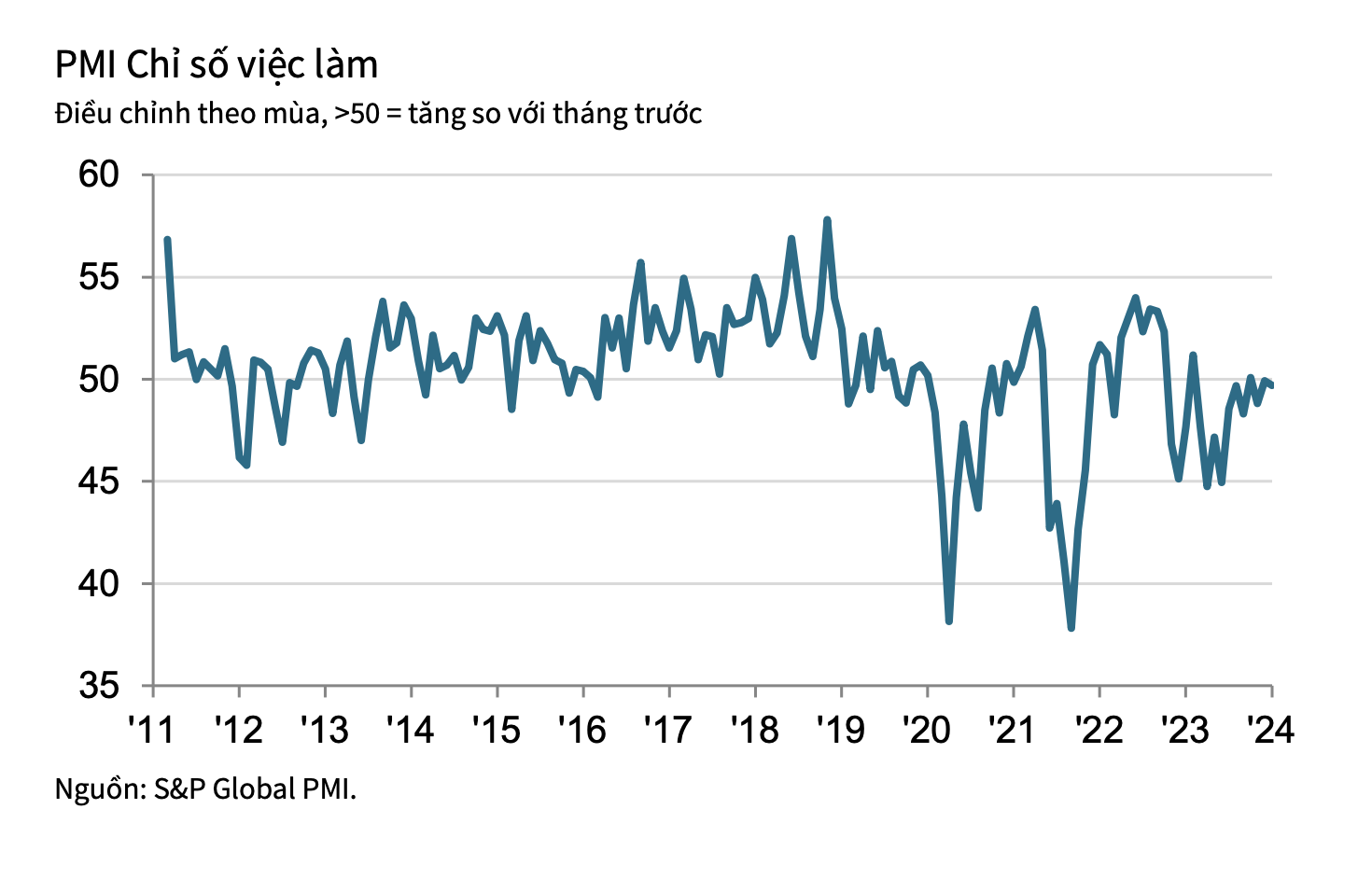
The Manufacturing Purchasing Managers’ IndexTM (PMI) for Vietnam’s manufacturing sector achieved a result of 50.4 in February, slightly higher than January’s 50.3 and above the 50-point threshold for the second consecutive month. The level of improvement in the health of the manufacturing sector remains only slight.
The number of new orders increased slightly for the second consecutive month, driven by an improvement in new orders from abroad. However, the rate of growth in new export orders slowed down, with only a slight increase.
Furthermore, the report reveals that output increased for the second consecutive month in February. This increase was slight and almost equal to the level recorded in January. Specifically, production increased in the consumer goods and basic investment goods sectors, but decreased in the intermediate goods sector.

Source: S&P Global
The increase in new orders has encouraged manufacturers to increase their workforce. This is the first time in four months that the number of employees has increased, and the increase is the highest in a year. However, some respondents mentioned that they only hired temporary employees.
The report assesses that companies have been able to complete backlogged work for the first time in three months, as both employment and new orders have increased.
Moreover, companies have used finished goods inventory to fulfill order requirements, leading to a continued decrease in post-production inventory. In fact, the pace of decrease in this period is the fastest in four months and one of the strongest decreases since January 2023.
In addition, manufacturers have decided to use purchased inventory in February instead of making new purchases. As a result, purchasing activity has decreased for the fourth consecutive month, while this decrease in input inventory is the most significant since June 2021.

Source: S&P Global
In places where companies purchase input goods, the report indicates that these businesses continue to experience extended delivery times in February. However, the performance of sellers in terms of delivery delays was low.
The transportation delays are understandable given the increased transportation costs due to rising oil prices. As a result, input costs continued to rise significantly in February, although the rate of increase was the lowest since September last year. Basic investment goods manufacturers experienced particularly strong cost increases.
Some manufacturers have passed on the higher input costs to customers, resulting in a slight increase in selling prices after a slight decrease in the previous survey period. The price increase reflects the reality that some companies are trying to limit price increases due to competitive pressures.
Business confidence has been boosted by plans for production expansion and the introduction of new products in early Q1, and the positive sentiment about output also reflects expectations for growth in new orders. Business confidence reached its highest level in a year, with nearly 55% of respondents expressing optimism.
Assessing Vietnam’s manufacturing sector in the first month of 2024, Andrew Harker, an economist at S&P Global Market Intelligence, said manufacturers were able to build on the return to growth seen in January with continued expansion in February.
“Particularly positive elements of the latest PMI survey are the return to employment growth and the highest business confidence in a year,” the economist said.
However, overall growth remains relatively weak, which has kept companies cautious about purchasing activity and maintaining inventory levels. Similarly, although output prices have increased after a decrease in January, the price increase is only slight as some companies are still hesitant to raise prices in a competitive environment.
“Manufacturers will need sustained and stronger growth in new orders before they can be confident in purchasing input goods and beginning to increase selling prices in line with the burden of costs,” the expert commented.









































